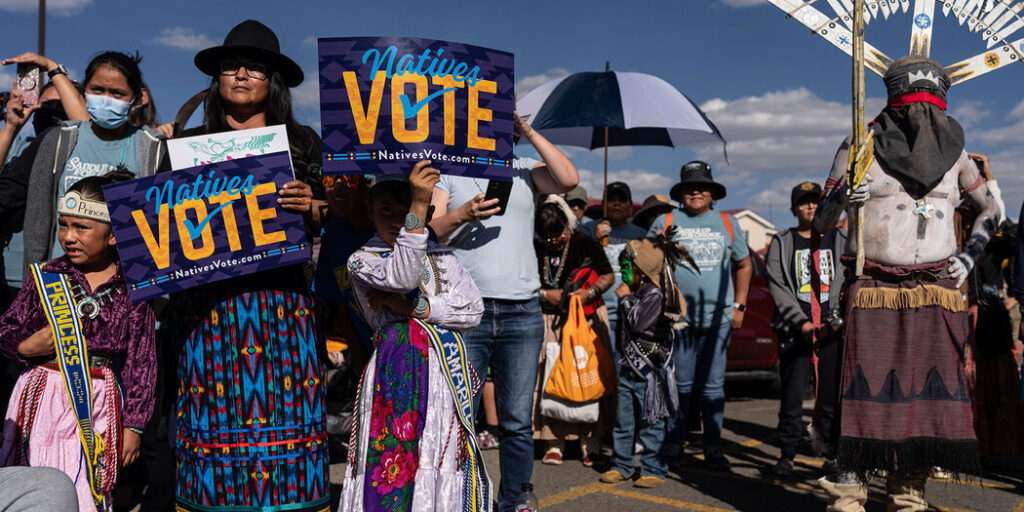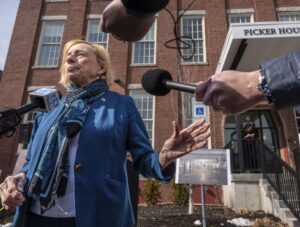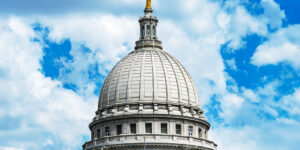Challenges Facing Native American Voters in the 2024 Election Cycle
As the 2024 election cycle unfolds, voters across the nation are grappling with issues like unjust removal from voter rolls, stringent identification requirements, and prolonged wait times at polling stations. Among those affected, Native American voters are experiencing a distinctive set of challenges that highlight ongoing voter suppression issues.
In Montana, members of the Fort Peck tribe face significant obstacles, requiring them to travel 30 to 60 miles to cast their votes. This situation arose after they were denied a satellite election office at a more convenient location on their reservation. Similarly, Native voters in several states, including Wisconsin—where tribal IDs are legally recognized—encounter difficulties in voting using their tribal identification cards.
These issues reflect a broader history of voter disenfranchisement faced by Native Americans. A recent report indicates that such practices have led to lower voter turnout among Native populations.
The roots of racial discrimination against Native Americans are deeply embedded in the nation’s history, with policies historically restricting their economic progress, social stability, and political influence. However, Native Americans have consistently participated in various elections despite efforts to undermine their voting power.
In states like Alaska, Arizona, Michigan, and Montana, Native voters form a significant bloc capable of influencing electoral outcomes. Unfortunately, they often face policies that uniquely burden those residing on tribal lands.
For instance, strict ballot collection limits in places like Nevada and New Mexico pose challenges for rural tribal communities lacking transportation to reach distant voting drop boxes and post offices. Additionally, laws demanding documentary proof of citizenship disproportionately impact Native Americans, as many lack easy access to required documents like birth certificates and passports, as highlighted by a Brennan Center study.
Although these stringent policies are justified under the guise of safeguarding election integrity, evidence suggests that voter fraud is extremely rare. Instead, these regulations create barriers for Native voters, impeding their political involvement.
A recent study comparing voter turnout on federally recognized tribal lands with other areas across 21 states from 2012 to 2022 shows that turnout on tribal lands is, on average, 11 percentage points lower. The gap is even more pronounced during presidential elections at 15 percentage points, compared to 7 points in midterms.
Such disparities indicate that conditions on tribal lands, including lengthy commutes to polling places, inadequate language support, and unreliable mail services, are substantial enough to deter potential voters.

Existing research suggests that voters of color are more likely to vote where their ethnic group is the majority. However, our analysis reveals a contrasting trend for Native voters on tribal lands; as the proportion of Native voters increases, turnout decreases, even when factors like income, education, age, and population density are considered.

To address these issues, federal and state governments must dismantle longstanding barriers hindering Native American electoral participation. The proposed Native American Voting Rights Act could play a pivotal role, aiming to boost polling place availability on tribal lands, enhance language assistance, and validate tribal IDs for voting.
CORRECTION: This article has been updated to reflect the average turnout gap between voters on and off tribal lands in percentage points rather than percentages.





